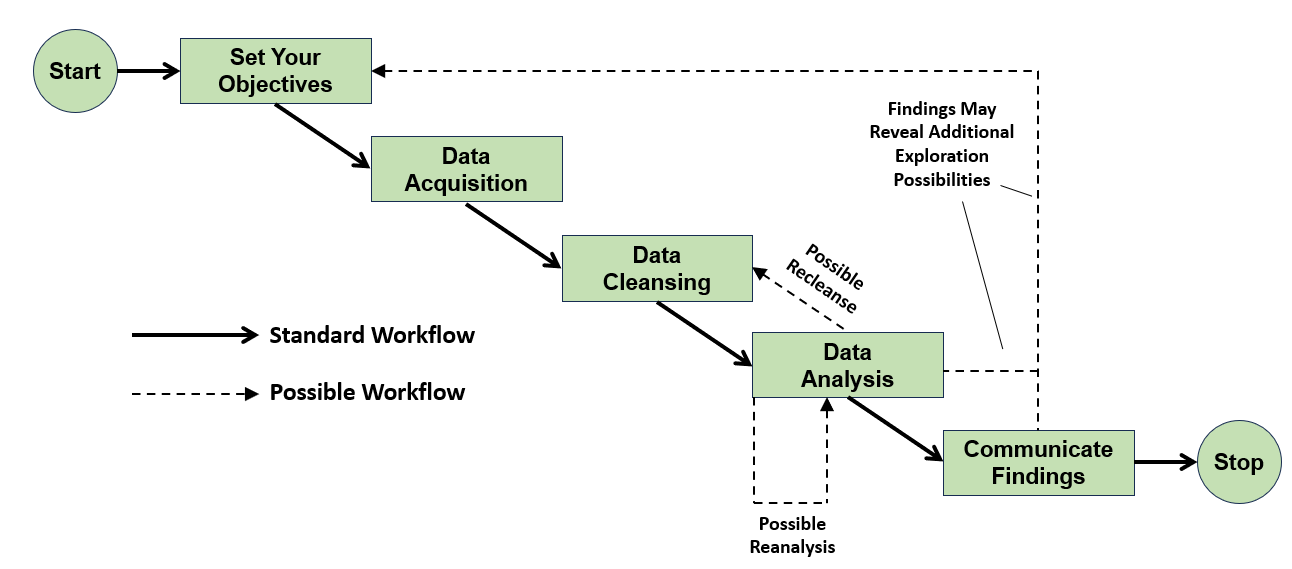https://www.alloutdoor.com/wp-content/uploads/2024/01/HK-G3.jpg
The Small Arms Survey estimates that, as of 2018, there are over one billion guns in circulation. A significant majority – around 85% – rest in the hands of the civilians, leaving about 133 million to military stores and 23 million for law enforcement agencies. That ten-digit figure grew by around 200 million in just a single decade, and the number in 2024 is likely to be even higher. After all, more than 7 million Americans became gun owners during the Pandemic alone. But which of those billion guns is the most popular or prolific guns in circulation? Many of the firearms contributing to that striking figure are archaic: World War and conflict relics, many of which were manufactured decades ago. Here are the top ten most prolific guns ever made, by the numbers. You have any preemptive guesses to what are the most prolific guns in history?…
Gun Coverage on AllOutdoor
#10 – Prolific Guns – Heckler & Koch G3

- Number Produced: ~7.8 million
- First Manufactured: 1959
- Country: Germany
- Caliber: 7.62×51 NATO
Sharing a contended title with the FN FAL as the “most successful battle rifle ever made,” the Heckler & Koch-produced G3 has seen service with over 70 countries’ militaries, with at least 15 of those nations manufacturing the rifle under license. The G3 remained the official rifle of the German armed forces until it was replaced by the G36 in the 90s. Some may claim the G3 is not deserving of this spot: They say other guns, like Russia’s Makarov, Japan’s Arisakas, Israel’s Uzis, and America’s M1 Garand were produced in greater numbers. But the production estimates of those and other guns that might fit here are poorly recorded, with figures attributed to secondhand accounts or otherwise lacking manufacturers’ citations. The Germans, however, are quite good at keeping numbers. Per a report from the Armament Research Services (ARES) in 2015, Heckler & Koch affirmed production of the G3 exceeds 7.8 million units; this is often rounded up to 8 million. The G3 is still produced, too, ensuring that – if it hadn’t already – it will exceed production numbers of those contested guns.
#9 – Prolific Guns – Marlin Model 60

- Number Produced: ~11 million
- First Manufactured: 1960
- Country: U.S.
- Caliber: .22 LR
If you’re an American who grew up in the 20th century, chances are high your first experience with a firearm involved shooting at cans with some .22 LR fired from a Marlin Model 60. Based on the defunct Marin Model 99, designed by Marlin engineer Ewald Nichol in 1959, the Model 60 became the most successful rimfire rifle ever sold to the American public, with approximately 11 million units sold – a figured collated by Walt Kuleck and Scott A. duff, author and publisher of of The Ruger 10/22 Complete Owner’s and Assembly Guide, respectively.
Its bull barrel contained a then-new “Micro Groove” technology introduced by Marlin a few years earlier. This rifling used 16 shallower lands and grooves – as opposed to the typical 5 deep grooves in competing barrels – to provide stabilization of the round while imparting less deformation upon it, resulting in greater accuracy. Coupled with factory taps for bolt-on scopes, the Marlin 60 became a top choice for varmint hunters. Although its manufacture ceased in 2020, the Model 60’s production numbers still eclipse that of its modern replacement, the Ruger 10/22.
#8 – Prolific Guns – Remington 870

- Number Produced: 11+ million
- First Manufactured: 1951
- Country: U.S.
- Caliber: Varies
The Model 870, produced by Remington and favored as the pump shotgun of choice by militaries and police departments globally, was made to replace the expensive and handcrafted Remington Model 31, designed by John Moses Browning in 1931. The Model 31 was produced to compete with the Winchester Model 1912 which was, at the time, the most popular shotgun sold on the civilian market. The M12 designation also served as a trench gun for the U.S Army, Navy, and Marine Corps in World Wars I and II.
After its debut in 1951, the Model 870 quickly became a commercial success and sold more than two million units by 1973, eclipsing all sales of the Model 31. A decade later, the Model 870 became the most sold shotgun in history, reaching 3 million units. The 870’s popularity again surged in 1996 with the introduction of its Express variant, an economy model that brought total sales up to 7 million units. Just over a decade later – on April 13, 2009 – Remington celebrated production of the ten millionth 870. With at least twelve factory variants available – and dozens more retailer-built configurations dotting store and digital shelves – for applications ranging from competition and self-defense to hunting, law enforcement, maritime and military use, the Remington 870 remains an affordable, utterly reliable everyman’s gun that can satisfy just about every shooting niche.
#7 – Prolific Guns – Mossberg 500

- Number Produced: 12+ million
- First Manufactured: 1961
- Country: U.S.
- Caliber: Varies
Trailing its direct competitor by a decade, the Mossberg 500 is to the Remington 870 what Coke is to Pepsi, or Ford to Chevy: A nearly identical peer in form and function, commanding as much popularity and proliferation as its counterpart – a statement certain to sound reductive and which will certainly rustle the feathers of staunch fans of either camp. But it’s true. The Mossberg 500 is, like the Model 870, one of the most popular shotguns ever produced, with O.F. Mossberg & Son declaring over 12 million variants have rolled off its factory floors. Though lighter and cheaper than its competitor – the 500 uses an aluminum receiver and some more plastic bits than the 870 – it is practically indecipherable from Remington’s gun at a glance, and police and military rely on the Mossberg as much as the Remington.
But unlike its peer, the Mossberg was made initially for military use only. It wasn’t until 1987 – 26 years after its initial manufacture – that Mossberg sold the 500 to the public and instead designed a newer variant, the M590, as the gun for uniformed use (though the 500 continued military service, too, as the M500). The 590A1 became the standard-issue shotgun for the United States Military and saw its first combat use in the 1991 Gulf War.
#6 – Prolific Guns – SKS

- Number Produced: ~15 million
- First Manufactured: 1945
- Country: USSR
- Caliber: 7.62x39mm
With an estimation of 15 million units produced – per data collated by Janes author and firearm historian Ian Hogg – The Samozaryadny Karabin sistemy Simonova, or SKS, became the most widely produced semiautomatic battle rifle, perhaps ever. Designed between 1941 and 1944 and first manufactured in 1945, the SKS was the Soviets’ answer to the Germans’ G43 and the Americans’ M1 rifles. Mechanically, the SKS was immediately inferior to those rifles and to its own Soviet counterpart, the SVT-40. While other semiautomatic battle rifles had detachable magazines, the SKS relied on an integral box magazine fed by stripped clips, limiting its reload speed and capping capacity at just 10 rounds. Some variants of the SKS also lacked a detention spring on the firing pin. The pin was instead allow to float inside the bolt – meaning that a forceful drop could slam the pin into the primer on a loaded round, allowing for potential slam fires.
The SKS was also rendered obsolete by its own nation with the production of the AK-47 just a decade later. But in spite of its limitations (and its short life in the limelight before being overshadowed by the AK-47) its simple, cheap design made it a favorable weapon for licensed production in China and dozens of other countries in the mid-20th century. Between 1988 and 1993, millions of Chinese and Russian SKS rifles were imported to the U.S. At publication, they’re still readily available on the secondhand market for between $600 and $2500, depending on condition and rarity.
#5 – Prolific Guns – Lee-Enfield

- Number Produced: ~17 million
- First Manufactured: 1895
- Country: Britain
- Caliber: .303 British
One of the first repeating rifles to use smokeless powder, the Lee-Enfield was Britain’s response to the Germans’ then-new Gewehr 88, a bolt-action rifle that also relied on smokeless powder and smaller 8mm rounds to obtain higher velocity and accuracy. A direct descendant of the Lee-Metford rifle, the Lee-Enfield’s new cartridge and detachable, 10-round box magazine provided British troops with significant advantages over opposing forces, many of which still relied on rifles fed by integrated magazines with lower capacities. The Lee-Enfield’s high capacity and reliability made it capable of providing some of the fastest rates of fire possible with a bolt action. Though citations are questionable, anecdotes from World War One include reports from German soldiers who claim they thought they’d encountered machine gunfire, when they had merely been fired upon by groups of British marksmen using Lee-Enfield rifles. The Lee-Enfield remained in service with the British military until the 1990s, when the sniper variant (the L42A1) was retired. But the rifle remains in service with some militaries and law enforcement organizations today – including the Bangladesh Police – making it one of the longest-serving rifles in existence.
#4 – Prolific Guns – AR-15/M4/M16 (and GLOCK)

- Number Produced: ~20 million
- First Manufactured: 1959 (AR-15), 1982 (GLOCK)
- Country: U.S. (AR-15), Austria (GLOCK)
- Caliber: Varies (both)
The AR-15
Two of the most popular modern firearms ever made share the next spot on this list. With over 20 million units sold, the AR-15 and GLOCK – and their endless variants – tie for the 4th most widely produced gun(s) in history. Originally developed by Eugene Stoner for ArmaLite in 1956, the AR-15 would first serve as an automatic rifle issued to U.S service members in the Vietnam War. ArmaLite sold the design to Colt in 1959; shortly after, the rifle would receive the M16 designation and be fielded by troops in 1963. Colt later introduced the semiautomatic variant of the M16 for civilian purchase, retaining the AR-15 namesake.
when Colt’s patent on the design expired in the 1970s, other manufacturers began producing AR-15 rifles. The rifle enjoyed widespread adoption and favorable review for its lightweight profile, simplicity, and good accuracy with little recoil thanks to its small, fast 5.56 NATO and .223 Remington loads. But the AR-15 would only become a rifle with a nearly occult following after it was thrust into the political theater. When the Assault Weapon Ban of 1994 expired in 2004, sales of the AR-15 exploded – as did the political commentary surrounding its legality and civilian ownership.
The GLOCK
Designed by Gaston Glock in Austria, the GLOCK handgun is, today, the most popular handgun manufactured and solid. The GLOCK was designed for the Austrian forces, earning its first contracts for military and police service in 1982 after becoming the favorite in field testing. The GLOCK beat competing designs from five manufacturers: H&K’s P7M and P9S; Sig’s P220 and P226; Beretta’s 92SB-F; an FN prototype based on the Browning Hi-Power; and the Steyr GB. Notably, Gaston Glock had no experience as a weapon designer. He was only an expert on synthetic polymers, but endeavored to use the material to produce a lightweight alternative to the steel and aluminum frames all handguns then relied upon. Glock assembled a team of firearm experts to compile the most desirable characteristics of a combat pistol to develop his first handgun. Friedrich Dechant, former Head of the Austrian Armaments and Defence Technology Agency, remarked on observing the GLOCK’s clear superiority over competing pistols. Today, GLOCK produces over 50 pistols of varying sizes and calibers, and it remains in service with thousands of police and military organizations globally.
#3 – Prolific Guns – Mosin-Nagant Rifle

- Number Produced: ~37 million
- First Manufactured: 1891
- Country: Russia
- Caliber: 7.62x54R
Holding the title as the longest-serving military rifle in existence, the Mosin-Nagant is one of the most recognizable bolt actions ever made. For collectors, the Mosin is usually the first “old war” gun to purchase. Just a decade ago, one could attend any public gun show and find the ever-present crates of Mosin rifles filled with M91/30s and M44s for less than $100 a piece. The Mosin-Nagant was designed to replace the Soviet empire’s aging stock of single-shot rifles, which contributed to heavy losses at the hands of the Ottoman Empire, whose troops were equipped with Winchester repeating rifles. In response, the Russian Ministry of Defense procured and tested the Lebel Model 1886, a French bolt action rifle, to spur development of what was officially called the 3-line rifle, M1891; the “3-line” refers to the Soviet rifle’s .30 caliber round. The Mosin also introduced the 7.62x54R cartridge, a round that became one of the most prolific machine gun cartridges ever fielded.
Although early Mosin rifles were finicky and suffered poor quality control, the M1891/30 – the “91/30” commonly available for sale on civilian marketplaces today – modernized the original design to improve feeding and disassembly. Since its widespread use by the Soviets in World Wars I and II, the Mosin-Nagant and its variants have traveled the globe, been used in more conflicts than any other bolt-action rifle – including present conflicts in the Middle East – and seen adoption by more than 40 countries.
#2 – Prolific Guns – Mauser 98

- Number Produced: ~100 million
- First Manufactured: 1898
- Country: Germany
- Caliber: M/88, 7.92x57mm
In spite of its relatively short lifespan – the rifle and its variants were only produced in large numbers between 1895 and 1945 – the Mauser Gewehr 98 (including rifles like the Karabiner 98k) remains the second most produced firearm in existence, with estimates placing total production north of 100 million guns. After initial delivery in 1898, the Mauser 98 saw immediate action during the Boxer Rebellion in the hands of German troops at Peking. By World War I, Germany had already produced nearly 2.3 million rifles; it would make an additional 7 million before the war ended. Originally chambered in M/88 – a long defunct, early smokeless cartridge – the Mauser 98 adopted the now infamous 7.92x57mm in 1903, commonly called 8mm Mauser.
The Mauser 98 also introduced the controlled feed method of cycling: the base of the shell casing is gripped by the bolt’s extractor claw before it’s stripped from the magazine and chambered; prior bolt action rifles relied on a simpler and less reliable “push feed” system, which relied on simple inertia and blunt contact to drive rounds into the chamber via the bolt face. The controlled feed system is relied upon to this day by all modern firearms that use conventional bolts and bolt carriers, and is regarded by many as one of the most important developments in modern rifle design. Although manufacture of the original 98 rifle ceased with Germany’s demise at the end of World War II, the rifle’s popularity spurred Mauser Jagdwaffen GmbH to resume production of 98 actions and rifles for civilian use in 1999. Modern iterations of the Mauser M98 are considered top-shelf safari guns, with big game models chambered in .30-06, .375, and .416 demanding $13,000 USD or more at retail.
#1 – Prolific Guns – AK-47

- Number Produced: ~150 million
- First Manufactured: 1948
- Country: USSR
- Caliber: 7.62x39mm
The Avtomat Kalashnikova needs no introduction. You’re probably not even surprised it’s number one. It is, after all, the single-most recognizable firearm ever made and, arguably, a creation that has defined humanity and influenced modern life as much as the automobile, airplane, and the internet. Conservative estimates place historical production figures of the AK-47 at a “measly” 75 million. But with licensed manufacturing and cloning of the most famous rifle spanning dozens of countries for decades, the figure is likely closer to 150 million.
If current production of modern variants like the Yugoslavian M70, American PSAK-47, Romanian WASR-10, and the Kalashnikov-licensed KR-103 (alongside other endless makes) are considered as part of the tally, the number of AK-47s roaming the planet is likely to climb in perpetuity. Even if the AK-47 were to disappear from all civilian markets, it would remain the most prolific firearm ever, as it continues to be the standard infantry rifle for 106 nations’ militaries. Speaking of AKs – Palmetto’s PSAK-47s ditch the archaic 7.62×39 in favor of decidedly superior cartridges, like 6.5 Grendel and 300 Blackout. Check ’em out here.
The post The Most Prolific Guns Ever Made, By The Numbers appeared first on AllOutdoor.com.
AllOutdoor.com


 Just as it is with power tools, each type of firearm has its own purpose. With the modularity of platforms like the AR-15, one type of gun can be configured in many different ways, covering different kinds of tasks. In my personal collection, I have a shorty AR for close range, a standard 16” do-it-all […]
Just as it is with power tools, each type of firearm has its own purpose. With the modularity of platforms like the AR-15, one type of gun can be configured in many different ways, covering different kinds of tasks. In my personal collection, I have a shorty AR for close range, a standard 16” do-it-all […]















